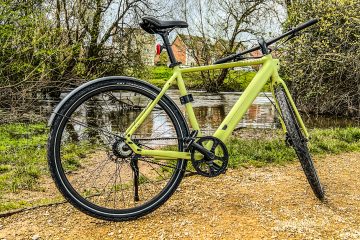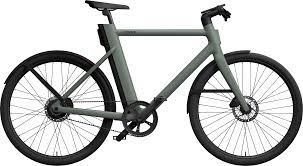I have been riding, writing about and working with global eBike companies for the best part of a decade. Initially a sceptic but over time I have become a convert. They have their place in my garage alongside my ever growing collection of niche bikes. I wanted to use this network of connections to research and provide insight on how Electric Bike Sales are Skyrocketing. Helping you discover eBikes if you haven’t already and also learn more about them if already a fan. Here’s What You Need to Know.
Are electric bikes popular?
Electric bikes, e-bikes, or eBikes are becoming increasingly popular. This rise in popularity brings more competition in the market, making it important to be informed before you make your next purchase. Governments of different countries are supporting the use of eBikes contributing to growth. This support includes subsidies to boost the sales. France, Norway and Poland offer incentives to people who want to buy eBikes. France offers an incentive of up to 4000Euros to people switching from cars to eBikes. In Canada they have been incentivising the purchase of eBikes since May 2019 offering $750 cash back for anyone buying an eBike.
Find out here how the eBike market has developed and important information on buying and using eBikes.
What is an eBike?
An ebike, short for electric bike, is a bicycle that is fitted with an electric motor and has a rechargeable battery. The electric motor provides assistance to the rider. This assistance can either be through motor assisted pedalling or from a throttle controlled motor. This depends on the class of eBike which is specific to where in the world you are.
Read more on the 4 different classes of eBikes in our post on how belt drive eBikes work.
Ebikes now come in various styles, including city bikes, mountain bikes, and road bikes. The list now goes on and on. Niche eBikes can be as varied as beach cruiser eBikes and folding belt drive eBikes. They have become increasingly popular as a more eco-friendly and efficient alternative to traditional modes of transportation.
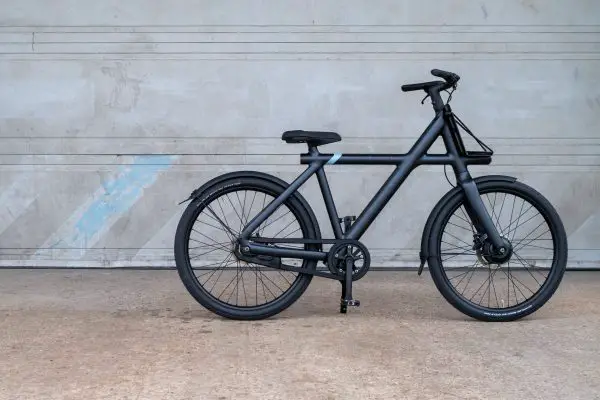
Are electric bikes legal in the UK?
Yes, electric bikes, also known as eBikes, are legal in the UK. However, there are specific UK regulations that eBikes must meet in order to be used legally on public roads and paths. In terms of class, all UK eBikes must be Class 1 eBikes. This is referred to as EAPCs, electrically assisted pedal cycles.
To meet the UK regulation eBikes must meet the following restrictions:
- The motor should have a maximum power output of 250 watts.
- The motor should only assist the rider when they are pedaling.
- The eBike should not be able to go faster than 15.5 mph (25 km/h) under motor power alone.
- The eBike must have pedals that can be used to propel it.
If an e-bike meets these criteria, it is considered an EAPC. These can be ridden on public roads and paths in the UK without a license, insurance, or registration. The UK has currently imposed an age restriction on the use of eBikes. This means riders must be 14 years old or over to ride an EAPC on public roads and paths.
As eBikes are controlled by a control system it is posssible for them to be hacked removing the speed limiter. This is a software update that can be applied generally amending the wheel size in the control unit. This results in the range projections being useless and breaks the manufacturer warranty.
Are electric bikes legal in the US?
Electric bikes are legal in the US. The specific regulations and laws regarding their use vary by state and municipality. In general, there are three classes of electric bikes recognized by the federal government of the United States.
Each state can choose to adopt these federal definitions or create their own regulations. Some states also have specific requirements for the size of the motor, the power output, and the age of the rider.
It’s important to check the local laws and regulations before purchasing or riding an electric bike to ensure that you are in compliance with the rules in your area.
Advantages of Electric Bikes
Electric bikes offer an incredibly green and efficient way to get around with little to no effort. Pedal assisted eBikes use a Torque sensor to provide assistance as you pedal. Throttle powered eBikes propel you using the motor without any effort at all. E-bikes don’t require any gas or oil, so they are not only reducing your carbon footprint but also saving you money in the long run compared to a car as an alternative. Additionally, electric bikes can help to save time while being incredibly cost effective. Generally you can progress quicker on an eBike compared to a conventional bicycle.
The majority of models include easily removable batteries, making it easy to charge them without having to worry about finding an outlet. They can be recharged from normal mains sockets unlike electric cars that tend to need specialist recharging stations.
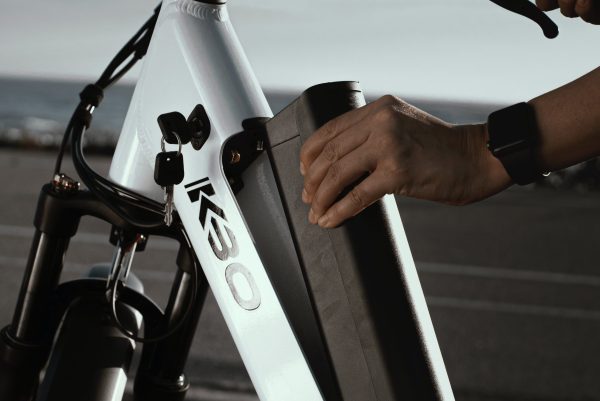
Electric bikes open up cycling to a much wider audience as well. The elderly are an ever growing market for eBikes. Still loving cycling but without the fitness to ride a conventional bike. eBikes allow them to continue cycling into much later life and offer a healthy low impact exercise for pedal assisted bikes.
Electric mountain bikes have been revolutionising off road cycling. While downhill has been a popular past time the ascent put many off. With e-mountain bikes returning back to the summit can be as enjoyable as the descent. Also reduces pressure on transport services to return up the mountain at locations such as Bike Park Wales.
For a round-up of the best folding electric bikes see our 2023 list of the best currently available.
Alternatively check our list of the best electric belt drive bikes for 2023. A perfect combination of electric motor and belt drive system.
Are electric bikes speed limited?
Yes, electric bikes (eBikes) are typically speed limited. This means they have a maximum speed that the motor will assist the rider to. The speed limit for e-bikes varies depending on the country or region where the bike is used. These have been given an International standard of eBike Class.
In the United States, electric bikes are have a maximum assisted speed of 28 mph (45 km/h).
In the European Union, the maximum assisted speed for e-bikes is generally 25 km/h (15.5 mph). Belgium is an exception to this, having created their own categories. These categories set a maximum speed of 45kph for “speed pedelecs”.
It’s important to note that even though e-bikes have a speed limit, they can still be ridden faster than the assisted speed by pedaling without assistance or going downhill.
Battery, Range and Motor Specs to Consider
When it comes to electric bikes, there are a few key specs that you should consider before making your purchase. Most prominently, range and motor power. On average, the range of an electric bike falls between 20-60 miles depending on the model and battery size.
eBike Battery specs make a huge difference in determining range. Most eBikes use Lithium-ion batteries. Batteries can be integrated, so fixed into the bike or removable for charging and replacement. A removable battery may be beneficial if you can’t charge your bike from where it is stored. Battery capacity is measured in watt-hours (wh). This is the unit of energy equivalent to one watt of power expended for one hour of time. eBikes batteries tend to be between 350Wh and 650Wh. The bigger capacity likely more range but more weight.
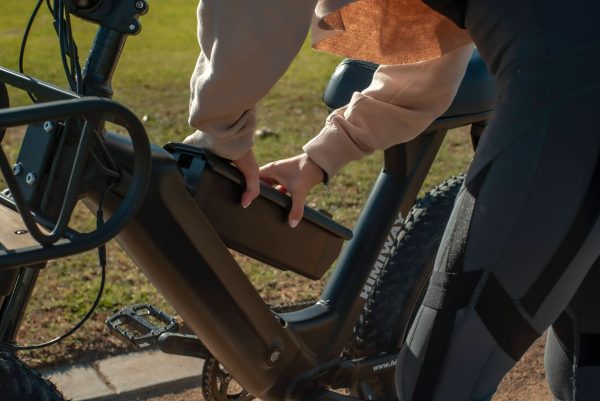
eBike motors will be restricted depending on the class of bike and region you are using it. European bikes tend to use 250W motors with US and Asia Pacific having motors from 250w to 750w. This is the overall power of the eBike motor. Equally important is the torque of the motor. Torque is measured in Newton-Meters. This explains the force that is acting (Newtons) in comaprison to the length of the lever that is applying it. The bigger the number on an eBike the more capacity it has for pulling bigger weights up hills. eBikes tend to have motors between 25Nm and 150Nm.
Price Point: Low vs High-End EBikes
So, how much should you expect to pay for an electric bike? Prices can range greatly depending on the battery, motor size and other factors such as type of bike. Generally speaking, entry-level ebike models start around the $1,500 in the USA and £1300 in the UK. Imported Chinese models direct from sites such as Alibaba can be much lower. With high power batteries and poor quality metal frame components common place I would be wary if spending any money on any of these. Buying from a reputable supplier always recommended on something of this nature.
High end ebikes can reach up to $10,000 in the USA or £10,000 in the UK. Electric downhill mountain bikes with high power mid motors and large batteries tend to be the most costly. Complex frame and suspension components combined with the best motor and battery components make these high end.
As with any purchase it’s important to assess your needs and intended use cases before settling one a model. Factors such as range, terrain capability and personal preferences also factor into the equation. Doing your research will help ensure that you find just the right model at just the right price point.
Weight Capacity and Frame Material to Consider
When selecting an electric bike it’s important to pay attention to weight capacity and frame material. Smaller, lighter riders will appreciate a lightweight frame made from materials such as aluminum. Carbon fibre frames can be lighter but more expensive and rare. Smaller riders should consider the weight of the bike in particular with an eBike as they are always heavier than conventional bikes. The battery, motor and control unit all add to the standard components on a bike and weight.
Steel frames tend to be heavier but don’t rule out a steel framed bike. If you are looking at a tourer with long range and ability to load up the bike a strong steel frame may be well suited. Heavy duty frames also suit e-cargo bikes used in city centres where they have to support a maximum weight capacity. Don’t just consider the weight of the bike but also how many braze-on gear mounts the frame has. This means the frame is designed for racks to carry bags and similar but also designed for heavier weights.
Is the e-bike industry growing?
The global market size of all bicycles is a huge $59.33bn. Cycling has seen a resurgence in popularity following Covid with Sales in 2020 seeing the largest single increase. The eBike market within this has grown more than any other single sector. eBike sales grew 240% between 2020 and 2021 with continued growth in 2022 reaching 36.5 million units accounting for approximately 1/3 of the total bicycle market. This was a combination of increased market awareness and supply chain issues easing. It is estimated that global e-bikes sales could reach $25bn by 2025 with it currenlty $20bn. North America and Asia Pacific are expected to be the fastest growing markets for eBikes globally.
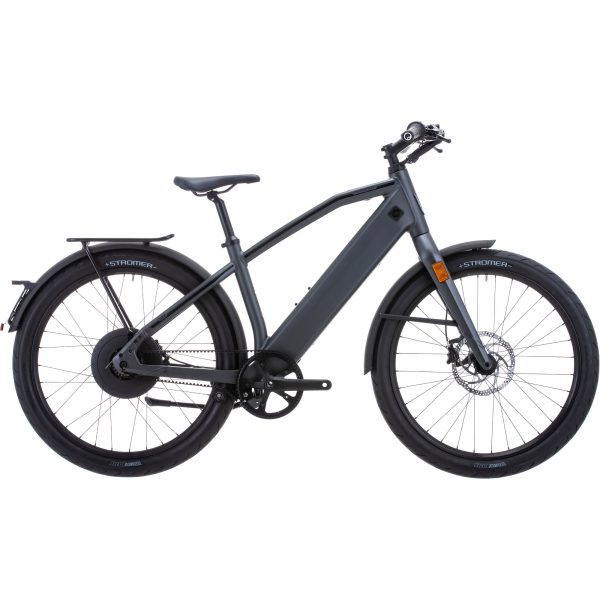
Electric Bike Sales UK
The UK eBike market was valued at over £250m in 2022 growing year on year. With the UK cycle to work scheme, established in 1999 the UK government has been supporting bike purchases. They extended this to include eBikes in the scheme from 2019 which has spurred growth of eBike sales. The scheme allows payments to be taken directly from employee’s salary ahead of tax making a bike purchase up to 39% cheaper.
Trek Bicycle Corporation Ltd in the UK posted operating profit of £40m in 2022. A 25% increase in profits from 2021. Electric bikes are stated as an increasingly important element of sales in their Annual Reports.
Electric Bike Sales Europe
Across Europe over 5 million eBikes were sold in 2022 of an overall market of more than 25 million bikes (data from EU Trade umbrella CONEBI – Confederation of the European Bicycle Industry). The eBike market in Europe represents 20% of the overall market with this number growing each year. Forecasts from various Industry insiders suggests the eBike market in Europe will be more than 17million sales per year by 2030.
Countries such as the Netherlands are leading the way in eBike sales spurred on by outstanding bicycle infrastructure, including over 35,000km of cycle lanes. Electric bikes have been adopted across the entire community.
Accell Group is the European market leader in e-bikes. Their brands include Raleigh, Ghost, Haibike, Lapierre and a number of other eBike brands. In 2021 they sold 440,000 eBikes in Europe, more than 50% of all bikes sold. The first year that they sold more eBikes than conventional bikes.
Electric Bikes Sale USA
As E-bike regulations have gradually matured in the last two years in North America, the market has flourished. Giant bikes sold approximately 987,000 E-bikes in 2021, which was equivalent to US$1.31 billion, up 33.2% from 2020.
Electric Bike Sales Asia Pacific
The Asia-Pacific electric bike market was valued at $5.2bn in 2021. The market is forecast to have a compound annual growth rate of over 10% for the next 5 years by market analysts. The rise in government initiatives to encourage the use of eBikes has been a major growth factor. Electric bikes are seeing wide spread adoption considered eco-friendly and efficient solutions for commuters. Tourism has also been contributing to the growth in eBike numbers with a number of cities adopting hire eBikes to help ease congestion.
Interntional trade regulations and lack of infrastructure will continue to obstuct greater market growth. This is likely to particularly impact import of overseas eBikes into the Asia-Pacific markets.
What types of bikes are electric?
There are several types of electric bicycles, each designed for different purposes and terrain. Here are some common types:
- Commuter e-bikes: These are designed for everyday use in the city, with a focus on comfort and ease of use. They usually have straight handlebars, and wider tyres for stability. The motor tends to be lower torque as riding on flat inner city streets.
- Mountain e-bikes: These are designed for off-road use and have features such as full suspension, wider tires, and a more aggressive frame geometry. Generally fitted with mid-motor to give maximum torque and support a wide rear gear ratios with conventional rear derailleur.
- Folding e-bikes: These are designed for portability and can be easily folded for storage or transportation. They’re ideal for commuters or people who need to carry their bike on public transport. Generally fitted with smaller rear hub motors and light batteries.
- Cargo e-bikes: These are designed for carrying heavy loads and usually have a large cargo area at the front or rear of the bike. They’re ideal for people who need to transport groceries or other good. They tend to rely on larger batteries to have increased range and reduce recharge cycles.
- Road e-bikes: These are designed for speed and efficiency on paved roads, with a focus on lightweight materials and aerodynamics. Generally fitted with integrated batteries for aesthetics inside the frame and smaller batteries.
- Hybrid e-bikes: These are a mix between road and mountain e-bikes, designed for a variety of terrains and uses. They usually have wider tires and a more upright riding position than road bikes, but are more efficient than mountain bikes. They are the most popular type of eBike with a wide range of styles and components from lightweight fixie style to tourer heavyweight.
- Cruiser e-bikes: These are designed for comfort and style, with features such as a wide saddle, swept-back handlebars, and a relaxed riding position. They’re ideal for casual rides around town or along the beach. Very much lifestyle eBikes with integrated batteries generally to maintain style of the frame.
New niches appear in eBikes regularly as new manufacturers explore new markets.

The Future of electric bicycles
Giant are already referring to the concept of Internet of Bicycles. This concept refers to a system of connected bikes that push and pull data from your bike. With eBikes having their own power source they are in the best position to support such a development. This would give you increasing information and support in the event of an issue while on your bike. Cowboy already include functionality to provide real time alerts to emergency contacts in the event of an accident.
The recharge technology pioneered in formula 1 cars is yet to make it to bikes but a KERS system will inevitably feature extending range. Range will continue to improve natively as battery technology improves allowing bikes to reach well beyond 100 miles on smaller 250Wh batteries. This will in turn allow eBikes to become lighter. A handful of eBikes already push below the 15kg mark and this will become the norm.
What is the best selling eBike?
The Trek Dual Sport+2 Stagger electric hybrid and Giant DailyTour E+ are the 2 most popular eBikes. This is based on Trek/Fisher and Giant being the 2 largest manufacturers of bikes in the world. From the top retaillers in the UK/USA and Asia Pacific they are the 2 most popular eBikes. In terms of types of bikes the hybrid bike is the most popular type of bikes with 33.3% of the market from 2021 data according to Fortune Busines Insights.
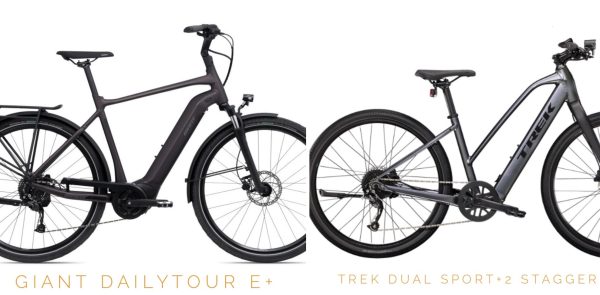
Where can electric bikes be used?
Ebikes can generally be used in the same places as traditional bicycles. However, e-bikes are equipped with an electric motor that provides pedal assistance, making them easier to ride uphill, over longer distances, and at higher speeds than traditional bicycles. Local legislation across the globe has adapted to support the growth of using eBikes and provide clarity on use. Assuming you conform to the regional classifications on eBikes you can use them anywhere. If you buy a Class of eBike not legal in your region this can only be used on private land. An example would be a Class 3 eBike that cannot be used in Europe.
Overall, eBikes can be used in a wide range of settings, providing riders with an efficient and eco-friendly mode of transportation. However, it’s important to check local laws and regulations to ensure that e-bikes are allowed in specific areas.
Can I buy an electric bike through my business?
Yes, you can buy an electric bike through your business, and depending on your country’s tax laws, it may be tax-deductible as a business expense.
If you plan to use the electric bike primarily for business purposes, such as commuting to and from work, making deliveries, or attending meetings, it may be considered a business asset and therefore eligible for tax deductions.
However, the specific tax laws related to business expenses vary by country and region. Therefore, it’s recommended that you consult with a tax professional or accountant to determine the exact tax benefits and implications of purchasing an electric bike through your business.
In the UK the company need to make the purchase in its name. You will need a VAT invoice from the supplier in your company name. With this invoice, you are able to reclaim the VAT and reduce corporation tax bill. There is no upper cap on the value of the eBike you can buy. The company are also able to buy any cycling equipment such as a helmet. HMRC rules mean the bike should be used predominately for work. If you buy the eBike through the company you can at a later date buy the eBike off the company.
Who are the biggest manufacturers of eBikes?
The Top 10 eBike manufacturers are:
- Trek Bicycle Corporation
- Giant Manufacturing
- Specialized
- Fuji Ta Bicycle Company Ltd
- Accell Group N.V.
- Merida
- Cannondale
- Scott
- Canyon
- Shanghai Phoenix Enterprise Group Company Ltd
Industry Experts Views on the Ebike Market
We spoke with a number of contacts in the industry about their views on eBikes. This is what they had to say.
Connor Swegle – Priority Bikes Founder
“EBikes offer the biggest opportunity for growth in cycling as it provides benefit for the recreational rider, enthusiast, family, and in the future, older kids. The electric assist empowers recreational riders such as the enthusiast. The expansion of eBikes and eBike brands, however, means that there is a wide variety of features and product protections. It’s important that riders feel confident in what they are buying and from whom they are buying as we move forward in the future.”
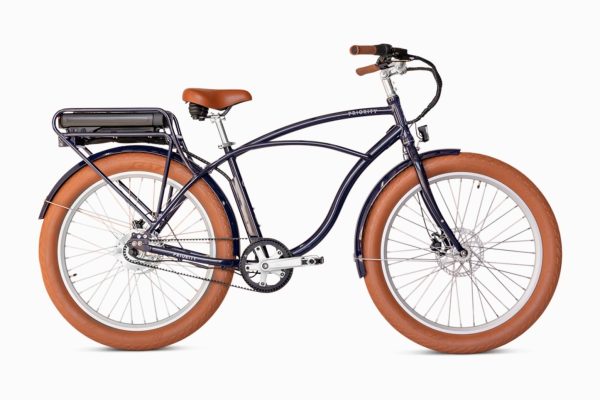
Trek Bikes Corporation Ltd 2022 Annual Report
“Electric Bike Sales continue to grow and this is becoming an increasingly significant category in the business. “
Matt Higginson – MiRider Bikes Sales Director
“With just 4 years in the bike industry (30+ in other industries) our experience of growth is probably quite concise compared to more mature brands.
It was fortuitous that the business started in 2019 just before the pandemic whereby the demand for cycling received a huge boost during the lock downs, so the timing was perfect to launch a brand. Having a good level of stock, we were able to capitalise on the additional demand in the marketplace, whether that was online or through independent bike shops.
Utilising our groups resources in purchasing, importation and distribution gave us a strong foundation to grow sales whilst maximising the customer experience through the product and service. Our second year sales grew by over 600% whilst year three was 150% towards the end of the pandemic restrictions. The year we are just finishing has been good but you can feel the ‘tightening’ across retail in general, mainly due to increased cost of living. The bike industry hasn’t avoided this and is widely known to have seen a 20% downturn, however we have continued to grow our dealer network to over 140 IBS’s and as we are set to finish our financial year 22/23, we’re predicting a strong percentage growth.
With strong investment in R&D ongoing, along with recruitment of key roles, MiRiDER’s future is on a pathway for significant growth with European expansion and new models launching over the next 12-18 months, as well as expanding our dealer network in the cycle and motorhome sectors.”
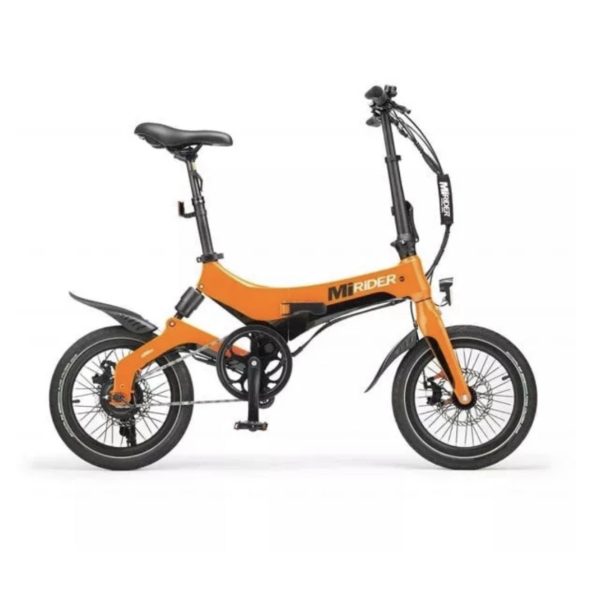
Giant Group 2021 Annual Report
“In recent years, we have seen a continual explosive growth in E-bike exports which drives industry growth.”
Ton Abeek – Accell Group N.V. CEO
“One development which has been taking place for some years already and which gained momentum in 2021, is the growing popularity of electric bicycles and e-cargo bikes. The e-bike, which Accell was the pioneer manufacturer of in 2004, makes the world more accessible for a large group of people. We see that people are more easily inclined to switch to an e-bike for their daily commutes and leisure activities.”
Andy Griffin – Allens e-bikes
“After another electrifying year at Allens e-bikes. Its safe to say E-bikes are for the here and now. We at Allens strive in sharing our knowledge of the E-motion industry so bike consumers can make informed decisions on their next ride.
With climate change having a huge impact on our lives eco-friendly transport is a must, E-bikes are filling this role and will continue to do so.
The future is very exciting as e-bike components will get smaller, lighter, and battery mileage will increase.
Our top selling bike is the Mi-Rider one. Very popular with commuters in big cities. Also Road.cc bike of the year.”
